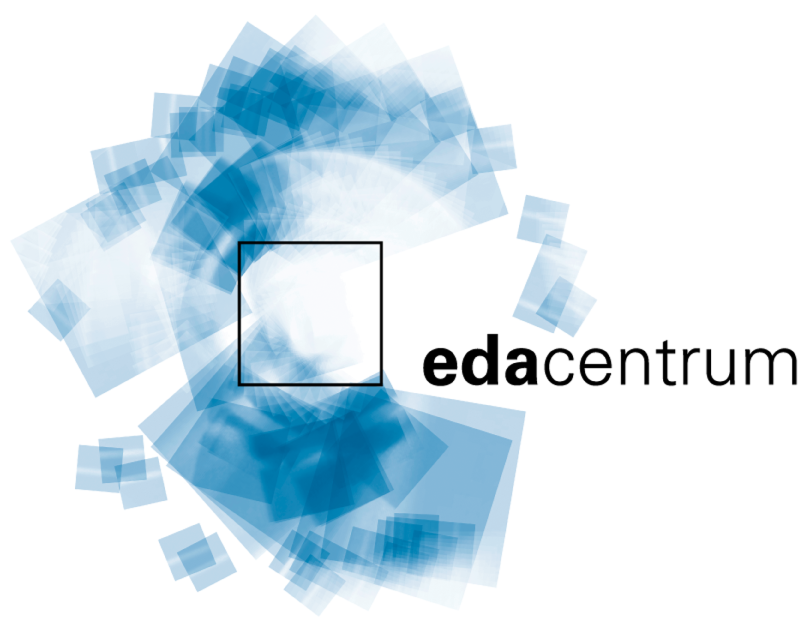newsletter edacentrum 03 2007

![]()
Auszüge aus dem Inhalt
Inhaltsverzeichnis der aktuellen Ausgabe, inkl. einer kleinen Leseprobe der Artikel.
|
Editorial |
|||
 |
|||
|
Projektspiegel |
|||
 |
"Projektbericht PRODUKTIV+: Referenzsystem zur Messung der Produktivität beim Entwurf nanoelektronischer Systeme"
PRODUKTIV+ ist ein F&E-Projekt, das sich von den anderen Projekten des Ekompass-Förderkomplexes abhebt -denn das Projekt hat sich die Modellierung und Messung der Entwurfsproduktivität in der Halbleiterindustrie zum Ziel gesetzt. Keine leichte Aufgabe ... . |
 |
"Abschlußbericht vom Projekt SIDRA"
Forschung zur Robustheit von ICs gegen elektrostatische Entladungen (ESD). |
 |
"Abschlußbericht vom Projekt LEONIDAS+"
Jüngste Ergebnisse beim leitbahnorientieren Entwurf applikationsspezifischer Schaltungen. |
 |
"Nachrichten von den Projekten"
Meldungen der Ekompass-Projekte HERKULES, VeronA und VISION. |
|
edaVeranstaltung |
|||
 |
"edaWorkshop – Der Start ist geglückt!" Aus dem Ekompass-Workshop wurde in diesem jahr der edaWorkshop. Lesen Sie die Zusammenfassung der Keynote- und Übersichtsvorträge und anderer wesentlicher Programmteile des eda- Workshop07. Erfahren Sie wichtige Details über die Teilnehmer des Kooperationsmarktes (S. 30). Und denken Sie schon jetzt an neue Beiträge für den edaWorkshop08. (Deadline wird der 18. Dezember 2007 sein). |
 |
edaForum07
Das Programm des am 6. und 7. Dezember in München stattfindenden edaForum08 steht fest. Während es in diesen Tagen verschickt wird, können Sie schon einmal "schnuppern" . Verschaffen Sie sich einen Überblick über die Votragenden und lesen Sie, welche Themen vorgestell |
 |
"edaMedaille 2007 an Udo Steinkopf"
Freuen Sie sich zusammen mit dem diesjährigen Preisträger und lesen Sie seine Laudatio. |
 |
"Kooperationsmarkt schlägt wieder ein"
Unter dem Motto "Ideen suchen Abnehmer - Markt sucht Innovationen" trafen sich zahlreiche Experten. |
 |
"Design Automation Conference"
Highlights von der diesjährigen DAC in San Diego, CA. |
||
|
Service |
|||
 |
"Alex und Bill – Aufsetzen zum Kick-off"
Die Fortsetzungsgeschichte zum Projektmanagement. |
 |
"Der „edaTrend DAC07“- Bericht ist für Mitglieder kostenlos "
Der "edaTrend DAC07" ist am 25. Juli 2007 erschienen und berichtet umfassend von der diesjährigen DAC. An dieser Stelle sei noch einmal darauf hingewiesen, dass dieser Bericht den Mitgliedern des edacentrum e. V. in diesem Jahr letztmalig kostenlos als PDF-Datei zur Verfügung steht. Wie Sie den Bericht erhalten können, lesen Sie in diesem Beitrag. |
|
EDA-Markt und -Unternehmen |
|||
|
Mitglieder |
|||
 |
Marktbeobachtung: "10% EDA-industry revenue growth in Q1/2007" Entwicklung der aktuellen Umsatzzahlen im Bereich EDA. |
 |
"Portraits und Neuigkeiten unserer Mitgliedsfirmen"
Mitgliedsfirmen stellen sich und neue Produkte vor. |
|
Weitere Rubriken |
|||
|
|||
|
Beilagen |
|||
Erscheinen
Der " newsletter eda centrum 03 2007 " umfasst 48 Seiten und ist am 25.09.2007 erschienen.
Der Redaktionsschluss für den " newsletter eda centrum 04 2007 " ist am 02.11.07
Er erscheint voraussichtlich im Dezember.
Erwerb
Fordern Sie gratis ein Probeheft des newsletter eda centrum über newsletter@edacentrum.de an. Sie erhalten in der Regel die gerade aktuelle Ausgabe ohne weitere Verpflichtung.
Außerdem können Sie den newsletter eda centrum für 40 € jährlich (4 Ausgaben inkl. Porto und MwSt.) beim edacentrum bestellen ( newsletter-abo.pdf ).
